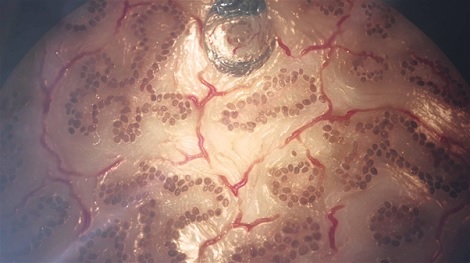Ink-jet making of biomolecules such as proteins, enzymes, antibodies and DNA was first achieved in 1988, and by 2004 ink-jet printing of mammalian cells was possible. This 3D bioprinting allows the cells to have the right association and compartmentalization, so that the performance and behavior of the tissue is representative of the whole. The synergistic effect of the interaction between cells mean they live much longer than when they are separate. An explosion of interest this year is driving commercialization of bioprinting. According to IDTechEx research, the 3D bioprinting market will reach $6 billion by 2024.

Organovo's 3D printed liver tissue. (Source: Organovo)
For example, Proctor & Gamble has engaged in the development of new techniques for testing products using 3D printed organ tissues that would allow the company to research how their cleaning and healthcare products might affect the organ systems of their customers. Other companies like Organovo recently announced a deal with L'Oreal where they will print live cells with up to 100% cellular concentration, and develop 3D printed skin for cosmetic testing. The use of 3D printed skin will allow L'Oreal to get more realistic information about the effects their products might have on the skin of their customers.
Organovo's first commercial product will be 3D-printed liver tissue, because of its importance in pharmaceutical research. They are using it to do custom research for drug discovery, toxicity testing, and metabolism studies and to monitor drug to drug interactions. It includes the three major cell types found in the liver. They can also print kidney, bone, blood vessel and lung tissues. The tissues live for about 40 days, which is long enough to monitor biochemical interactions, genetic expressions and histology, but not long enough for the lifetime needed for implants. The size is limited to 3 x 3 x 1-mm, because the lack of vascular system which means the tissue must be fed from the outside. This is big enough for biopsy, but is not a whole organ. That may come later. Find more at www.IDTechEx.com/research/3d
Advertisement





